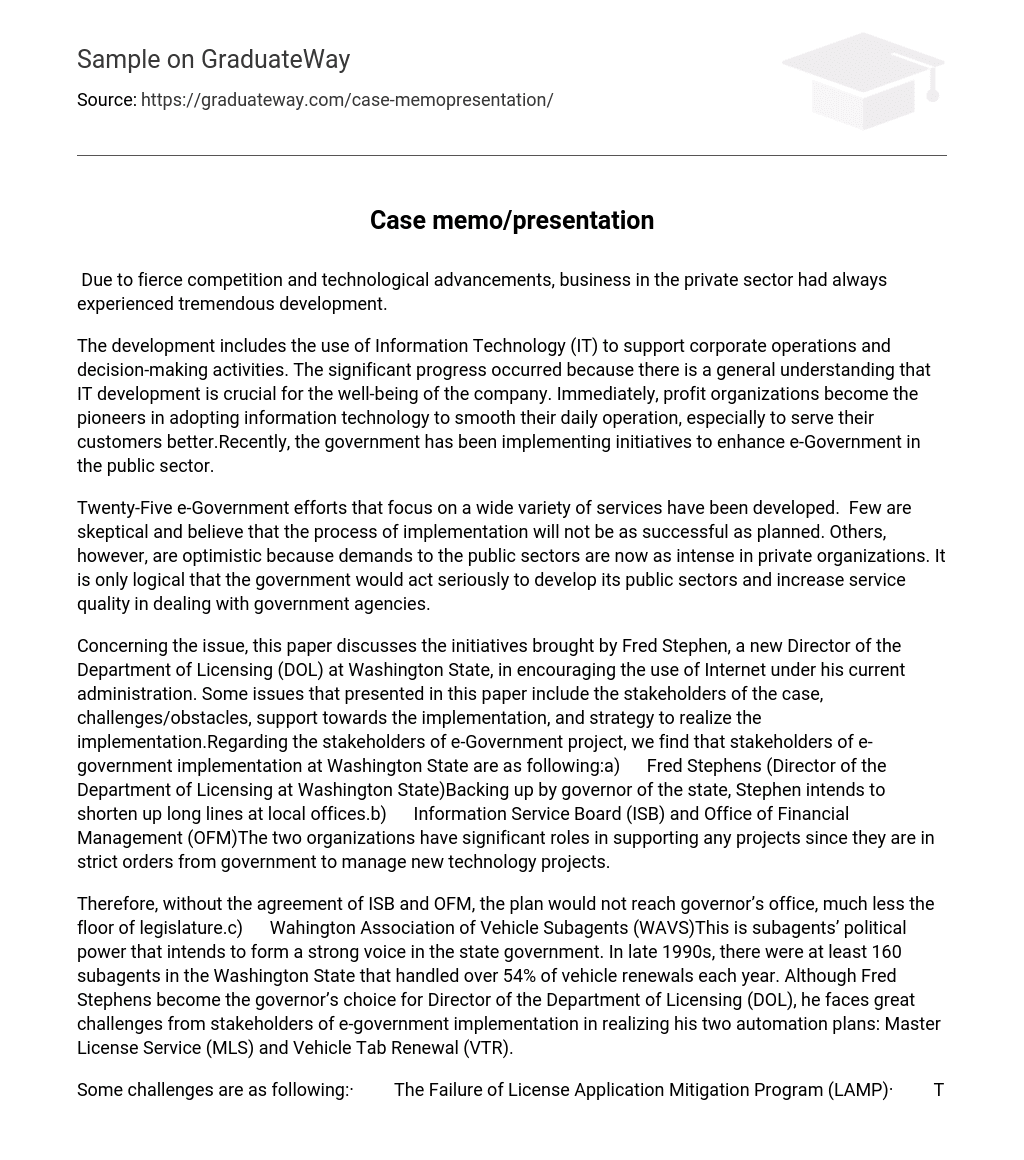Due to fierce competition and technological advancements, business in the private sector had always experienced tremendous development.
The development includes the use of Information Technology (IT) to support corporate operations and decision-making activities. The significant progress occurred because there is a general understanding that IT development is crucial for the well-being of the company. Immediately, profit organizations become the pioneers in adopting information technology to smooth their daily operation, especially to serve their customers better.Recently, the government has been implementing initiatives to enhance e-Government in the public sector.
Twenty-Five e-Government efforts that focus on a wide variety of services have been developed. Few are skeptical and believe that the process of implementation will not be as successful as planned. Others, however, are optimistic because demands to the public sectors are now as intense in private organizations. It is only logical that the government would act seriously to develop its public sectors and increase service quality in dealing with government agencies.
Concerning the issue, this paper discusses the initiatives brought by Fred Stephen, a new Director of the Department of Licensing (DOL) at Washington State, in encouraging the use of Internet under his current administration. Some issues that presented in this paper include the stakeholders of the case, challenges/obstacles, support towards the implementation, and strategy to realize the implementation.Regarding the stakeholders of e-Government project, we find that stakeholders of e-government implementation at Washington State are as following:a) Fred Stephens (Director of the Department of Licensing at Washington State)Backing up by governor of the state, Stephen intends to shorten up long lines at local offices.b) Information Service Board (ISB) and Office of Financial Management (OFM)The two organizations have significant roles in supporting any projects since they are in strict orders from government to manage new technology projects.
Therefore, without the agreement of ISB and OFM, the plan would not reach governor’s office, much less the floor of legislature.c) Wahington Association of Vehicle Subagents (WAVS)This is subagents’ political power that intends to form a strong voice in the state government. In late 1990s, there were at least 160 subagents in the Washington State that handled over 54% of vehicle renewals each year. Although Fred Stephens become the governor’s choice for Director of the Department of Licensing (DOL), he faces great challenges from stakeholders of e-government implementation in realizing his two automation plans: Master License Service (MLS) and Vehicle Tab Renewal (VTR).
Some challenges are as following:· The Failure of License Application Mitigation Program (LAMP)· The Image of Fred Stephens and Internal Obstacles· Difficulty at Subagents locations In order to alleviate the obstacles, DOL should focus on employing the supports towards implementation of Vehicle Tab Renewal system including:Governors’ PlanSupporting DOL StaffsSupports from Agents and AuditorsIn addition, to design these integrated systems suitably and successfully, Stephens can perform six initiatives; they are defining strategy and conducting preliminary investigation, system analysis, system design, system, development and construction, system implementation and transition, and system maintenance and production.





